Introduction
Developing an e-commerce app involves various factors that can significantly impact the overall cost. From the complexity of the desired features and functionality to the location of the development team, each element plays a crucial role in determining the budget for your project. In this article, we will explore these factors and provide insights on how to optimize your investment.
Whether you're looking to create a basic app or a sophisticated platform, understanding the cost breakdown and implementing cost-saving strategies is essential. So, let's dive in and discover how you can navigate the world of e-commerce app development costs.
Factors Affecting E-commerce App Development Cost
Understanding the various elements impacting the expenses of creating an e-commerce application is crucial for maximizing your investment. Reports suggest that the expenses related to creating software in 2024 usually vary between $70,000 and $250,000. Nevertheless, these numbers can be misleading without taking into account your particular project requirements, business objectives, and external factors, all of which can have a substantial impact on the ultimate expenditure.
Creating a web application, for example, is akin to constructing a house where size, features, and location play a pivotal role in determining the budget. Whether you're setting up a personal blog or developing a comprehensive corporate website, each type has its own set of complexities and price points.
In the context of mobile app development, the functionality and complexity of the app are significant determinants of expenditure. Basic apps, such as those providing information, are generally more affordable to develop compared to their more complex counterparts.
As the online shopping sector thrives, encompassing a wide range of markets including food, beverages, and household essentials, the demand for specialized apps continues to surge. This growth is a testament to the sector's reach, allowing businesses to connect with customers globally and expand their offerings.
To summarize, although the average expenses serve as a foundation, conducting a comprehensive examination of your application's intended objective, features, and demographic is essential in developing a practical financial plan for your online business.
Complexity of App Features and Functionality
When contemplating the creation of an e-commerce website or mobile app, one of the most important factors impacting the overall expenditure is the complexity of the desired features and functionalities. As the digital market continues to thrive, the necessity for mobile applications has become supreme for both businesses and individual entrepreneurs. Creating an app is a multi-stage process, with each phase adding to the total investment required. To navigate this process effectively and establish a realistic budget, it's crucial to understand that a simple app with fundamental features, such as an informational platform, is generally more economical to develop. Conversely, applications that require complex, cutting-edge capabilities like real-time data synchronization, geolocation services, or augmented reality demand a substantial amount of resources, leading to increased expenditure. A thorough examination of your project and business objectives is essential for a precise price evaluation, as prices in the software creation realm for 2024 can fluctuate considerably, ranging anywhere from $70,000 to $250,000. This variability is due to numerous factors that must be considered, such as the app's size, the features you wish to incorporate, and their respective complexity. In light of this, prioritizing the features that are essential for your app to function effectively and meet your business objectives is paramount in ensuring that your investment yields a cost-effective solution. With careful strategizing and a comprehensive grasp of the essential elements, you can collaborate with the appropriate company to produce a valuable digital tool that aligns with your budget limitations.
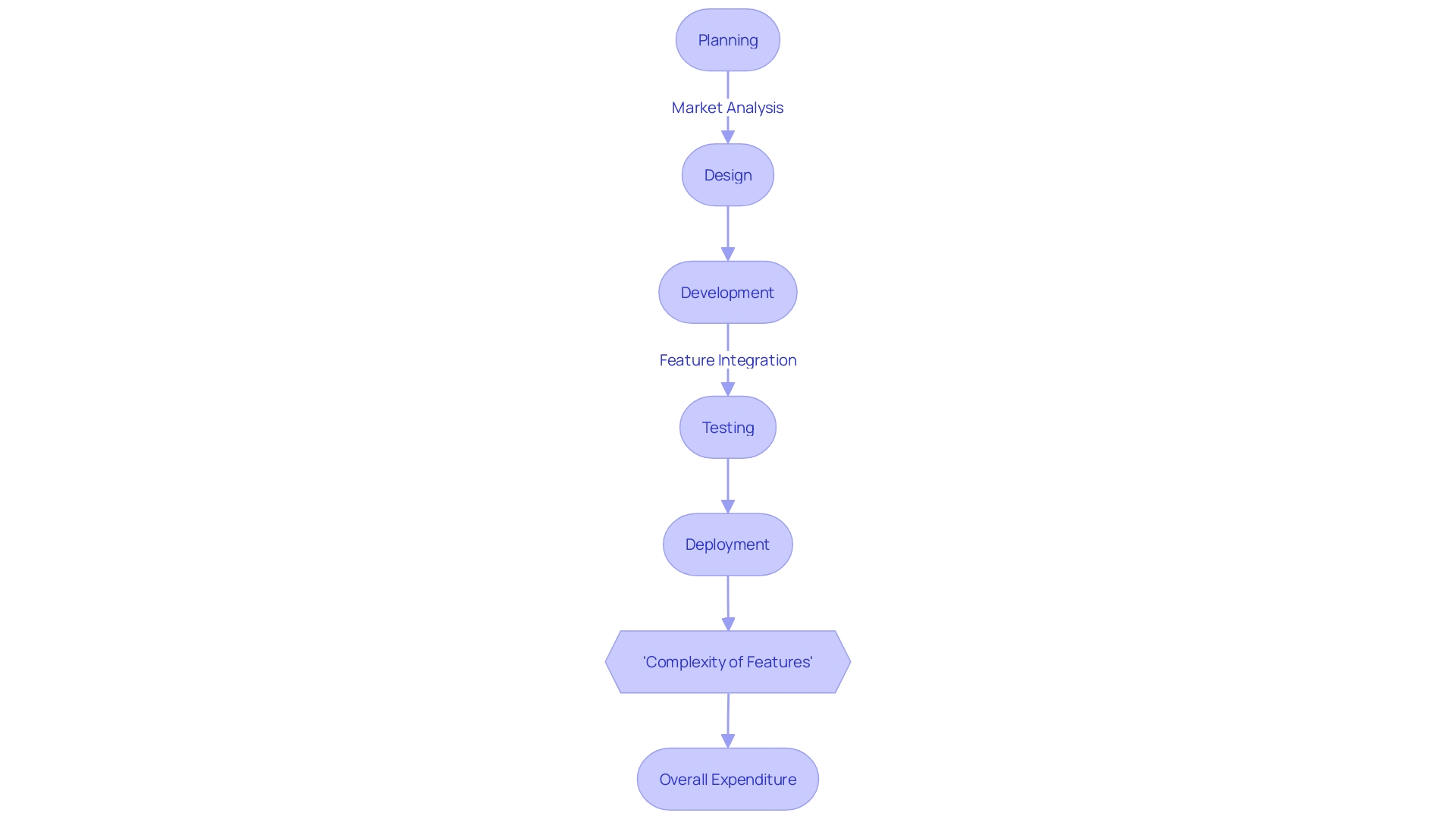
Location of the E-commerce App Development Company
The geographic position of an e-commerce app creation firm can greatly impact the overall expenses of creating. Companies located in regions with expensive labor like North America or Western Europe tend to demand higher pricing, while those in areas with lower labor expenses may offer more affordable rates. For cost-conscious businesses, collaborating with a reputable company from an economically advantageous location could result in significant savings on project expenses. It is crucial, however, to ensure that quality and communication standards are not compromised in pursuit of lower costs. With the rapid growth of online shopping, particularly in developing markets, local development firms can utilize regional knowledge and creative strategies to build customized, budget-friendly online retail solutions. This not only supports the burgeoning local tech ecosystem but also leverages the leapfrogging innovation that characterizes these markets, potentially accelerating growth and digital adoption.
Design and User Experience
The intersection of design and usability in online platforms is more than aesthetics; it's about creating an experience that resonates with users and encourages engagement. A sophisticated design must go hand in hand with a seamless user interface. This approach not only helps in retaining customers but also ensures that they complete their transactions with confidence and ease. A study on user behavior found that even after a transaction is completed, customers look for immediate confirmation, like seeing their reservation in an account after booking a service. This moment of reassurance is critical in user experience design.
Cost considerations are a core element when deciding on the features and design elements to include in your online business solution. For instance, the courier industry has shown us that price transparency can be a differentiating factor. Users appreciate clear pricing without the need to navigate through complex interfaces for basic information. Similarly, the price of shipping a parcel varies significantly between providers, emphasizing the significance of competitive pricing and cost-effective service offerings in the e-commerce industry.
Looking at the broader industry trends, agencies like Numiko have identified that web design trends are rapidly evolving, with predictions for 2024 suggesting an increase in the popularity of certain layouts, influenced by major players like Apple. We must consider the financial implications of adopting such trends along with the benefits they bring. For example, the cost of developing a sophisticated app or website can range significantly but aligning this with your business objectives and market expectations is vital for a successful outcome.
Furthermore, the use of bitmap typefaces, as seen in the contrast with Leonardo da Vinci's 'Annunciation', can create a sense of timelessness and mastery in design that appeals to the modern consumer's appreciation for craft. This reinforces the idea that innovative design choices can leave a lasting impression on users.
In eCommerce, the growing influence of AI and machine learning algorithms is setting the stage for personalized shopping experiences. These technological advancements are changing the way businesses interact with customers, making it important for online trade directors to consider the long-term benefits of investing in such technologies.
Ultimately, the goal is to find the sweet spot where the investment in design and functionality enhances the user experience, leading to increased customer loyalty and sales, without straining the budget. As we enter 2024, it's evident that innovative approaches to design and usability will remain crucial factors in the online business industry.
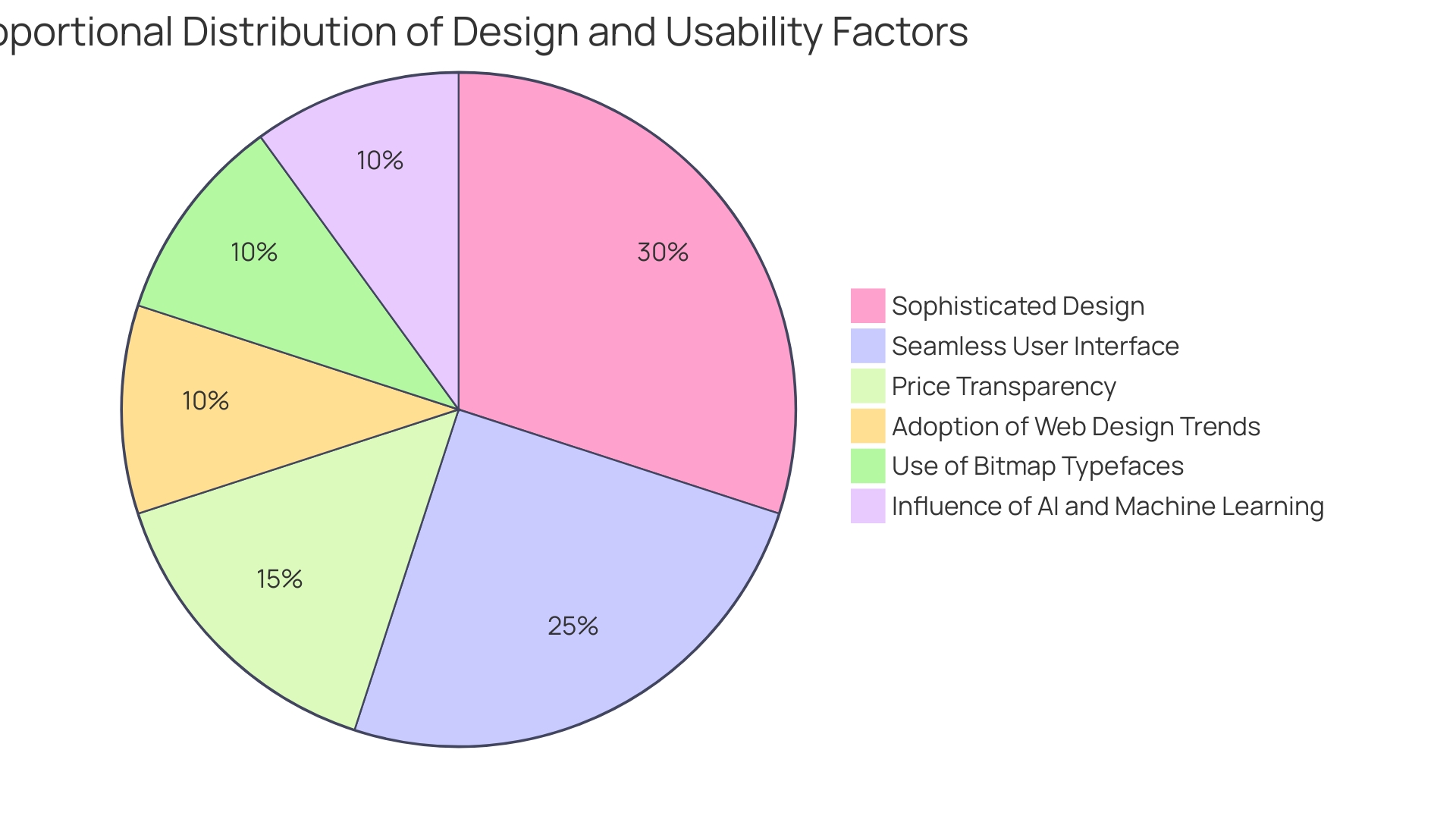
Integration Requirements
Incorporating external systems or APIs into your online business application can greatly impact the overall investment in its creation. The intricacy of these integrations is pivotal, as they require a harmonious interplay between different software programs. An API acts as a translator, enabling seamless communication and functionality between disparate systems, which is essential in today's digital commerce landscape. With over 24,000 APIs available on ProgrammableWeb and more than 2 million API repositories on GitHub, the options for integration are vast. Nevertheless, the procedure of choosing is vital, and it's essential to guarantee compatibility and accessibility of the APIs to reduce efforts and expenses. As APIs have become essential in modern software engineering, their strategic adoption can result in stronger and groundbreaking applications, enhancing the potential for market achievements.
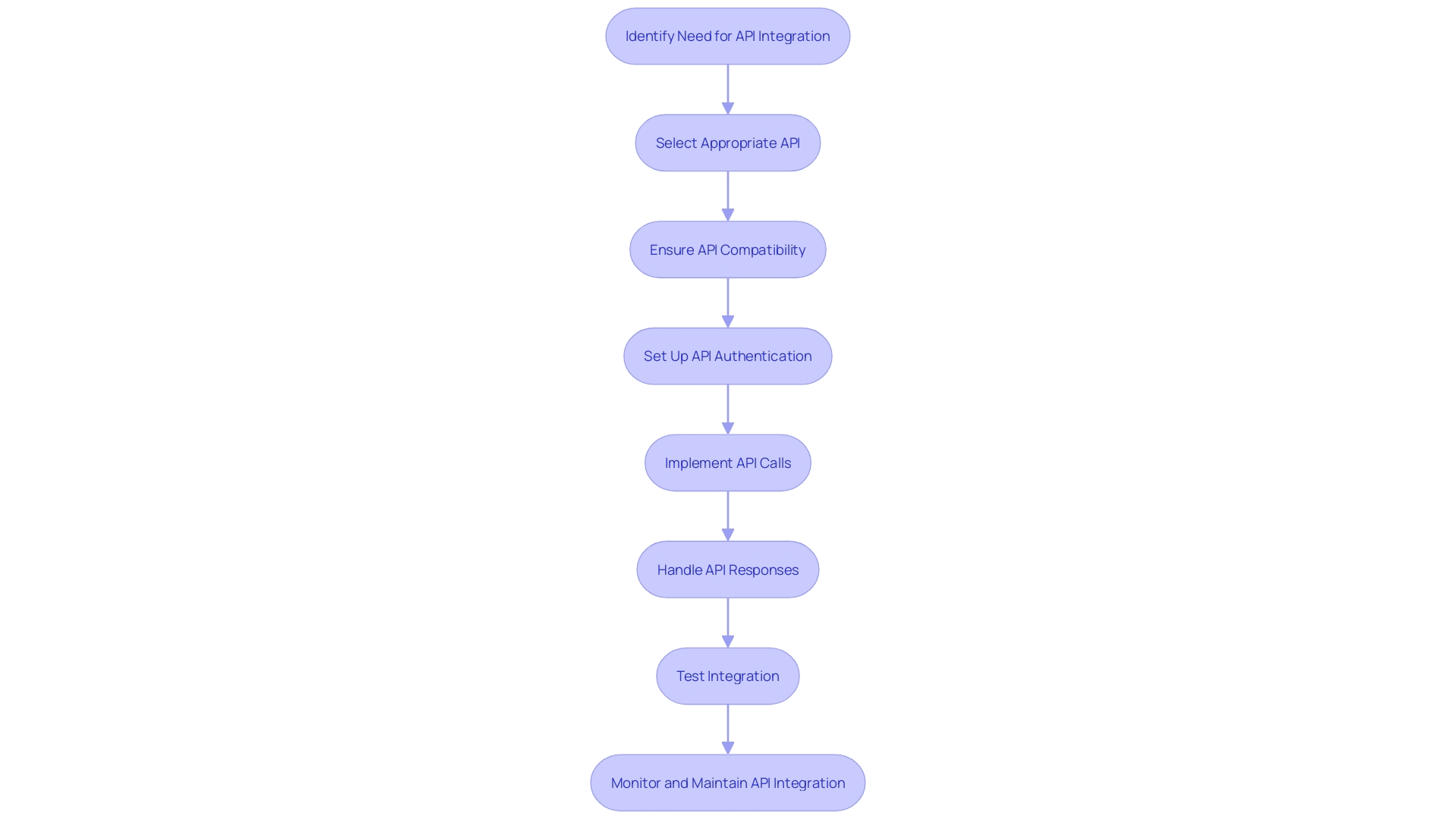
Development Team Location
When considering the creation of an e-commerce website or app, the geographical location of your team is a pivotal factor influencing overall expenses. With software development expenses ranging broadly from $70,000 to $250,000, businesses must navigate a complex pricing landscape. The overall expense frequently surpasses mere hourly rates, encompassing communication, management, quality, and long-term maintenance.
Outsourcing becomes a strategic method to reduce high labor expenses, especially when utilizing talent from regions with more advantageous economic conditions. This practice involves engaging a third-party to manage specific tasks or operations, potentially offering financial advantages and access to specialized expertise. However, the decision to outsource should be made with a comprehensive understanding of the implications, including the need for meticulous documentation, the incorporation of automated testing, and strategies for knowledge transfer back to the in-house team.
Recent trends also highlight the growing popularity of nearshoring, which optimizes outsourcing by partnering with nearby countries. This approach not only provides savings but also offers access to a skilled workforce and aligns with the desire for flexibility in work environments—a significant consideration in the post-COVID-19 landscape.
The key to successful outsourcing or nearshoring lies in maintaining quality while managing costs. As Fred Brooks insightfully noted in 'The Mythical Man-Month,' effective communication and a small, skilled team are essential to the success of software projects, warning against the pitfalls of scaling up manpower hastily. Thus, companies must ensure robust planning and clear communication channels to foster collaboration and uphold project integrity, securing a favorable return on investment.
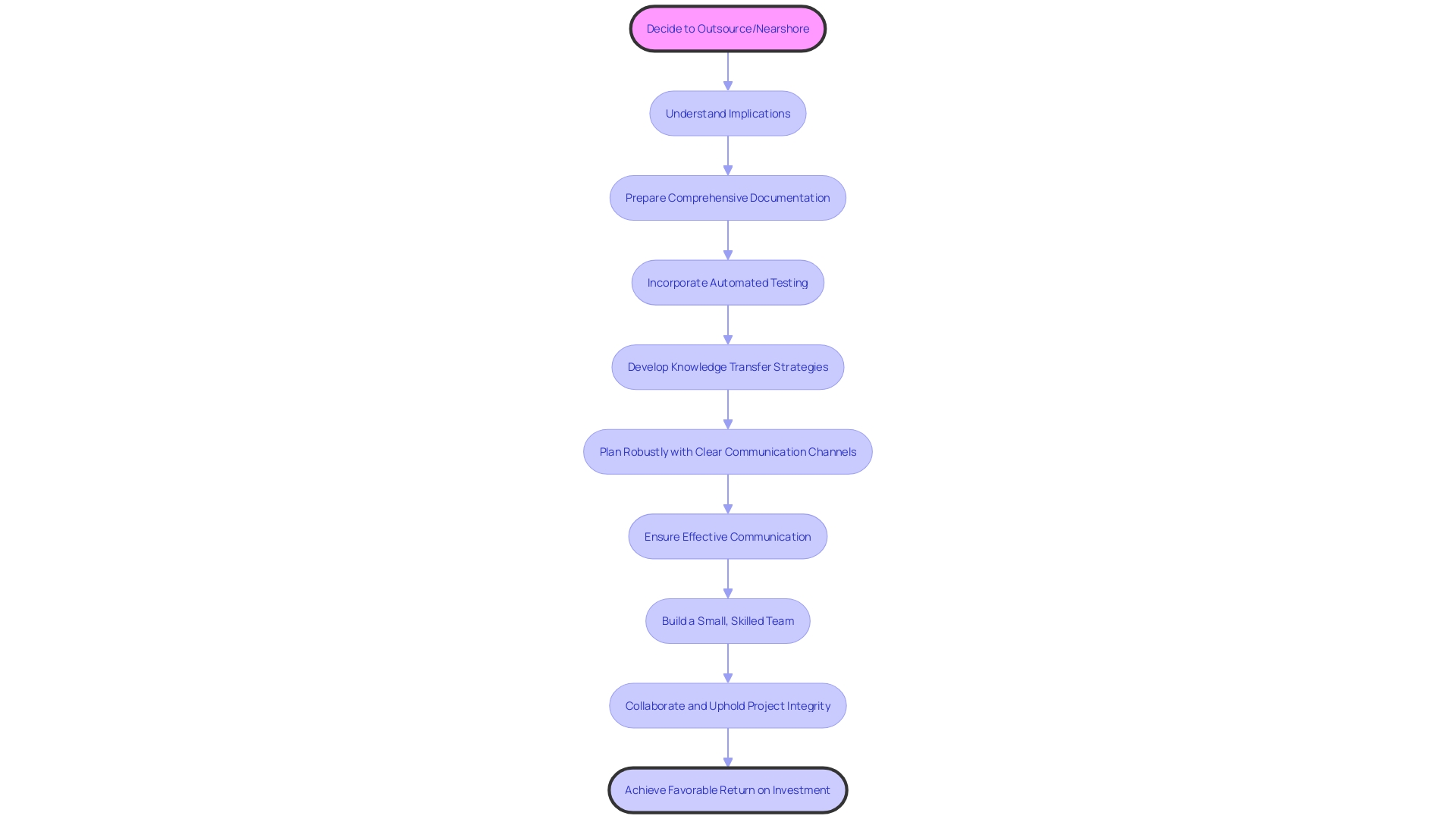
Maintenance and Updates
Ensuring the longevity and relevance of your online business application is not just about the initial launch; it's about continuous improvement and adaptation. Maintenance isn't just a line item in your budget; it's an investment into the app's future-proofing, security, and user experience. It's a process that encompasses the refinement of features, like the label system for document management, providing editors with the ability to fork documents for state-specific revisions. It also involves navigating through stages such as Regulator, for compliance, Staging, for testing, and Integration, for seamless frontend application compatibility.
The changing landscape of online business, highlighted by the rapid experimentation on platforms like Etsy's Android app, reflects the need for innovation and regular updates. This innovation is driven by the intersection of technology and user experience, where even complex screens become test beds for new features and improvements. It's not just about fixing bugs; it's about enhancing the overall experience, ensuring that your app is aligned with the current online trading trends that see AI and machine learning algorithms personalizing shopping experiences.
The commitment to maintain and update an app is what separates the fleeting from the foundational in the digital marketplace. For example, the growth of the Indian online market is fueled by stories of innovation and entrepreneurship, indicative of a vibrant sector that demands apps stay ahead of the curve. With billions of online shoppers, the stakes are high, and the expense of maintenance is a small price for customer retention and satisfaction. After all, the harsh reality of app uninstall rates speaks volumes about user expectations; an app forsaken on the grounds of stagnation is a missed opportunity in an industry where activation and engagement are the benchmarks of success.
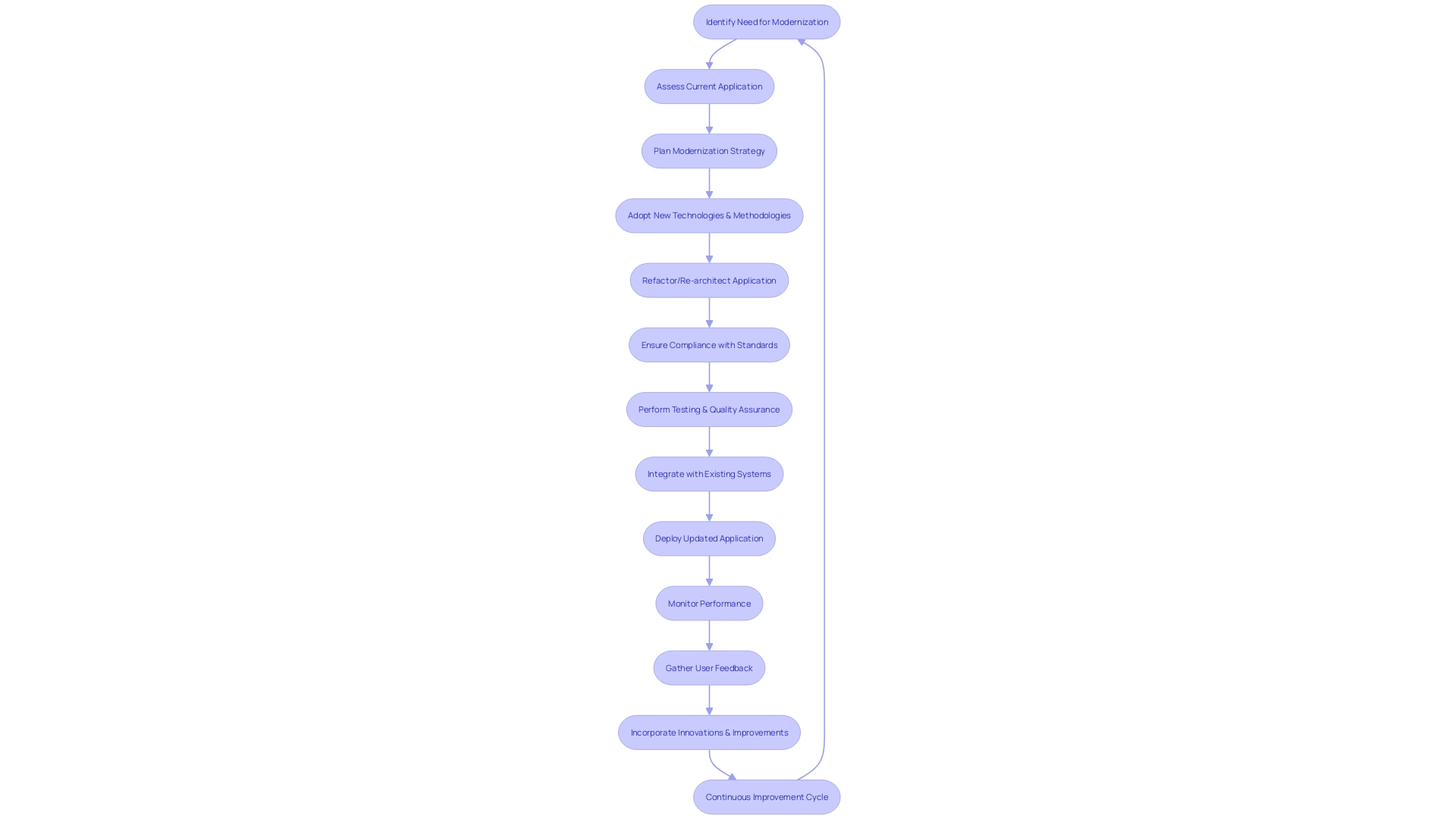
Cost Breakdown of E-commerce App Development
Effectively managing your budget for e-commerce app creation necessitates comprehending the usual expenditure elements involved. With the average software creation expense in 2024 varying from $70K to $250K, various factors contribute to these figures, making accurate pricing without a thorough analysis a complex undertaking. A multitude of variables influences the final price, similar to constructing a dream house, where the size, features, and location determine the amount. Likewise, the intricacy of the app, ranging from basic informational apps to more sophisticated systems, has a substantial effect on the expenses of building it. It's crucial to factor in various stages of app creation, each adding to the overall expenditure. By understanding these stages and the type of application desired, you can collaborate with a suitable app development company and establish a realistic budget for your online business solution.
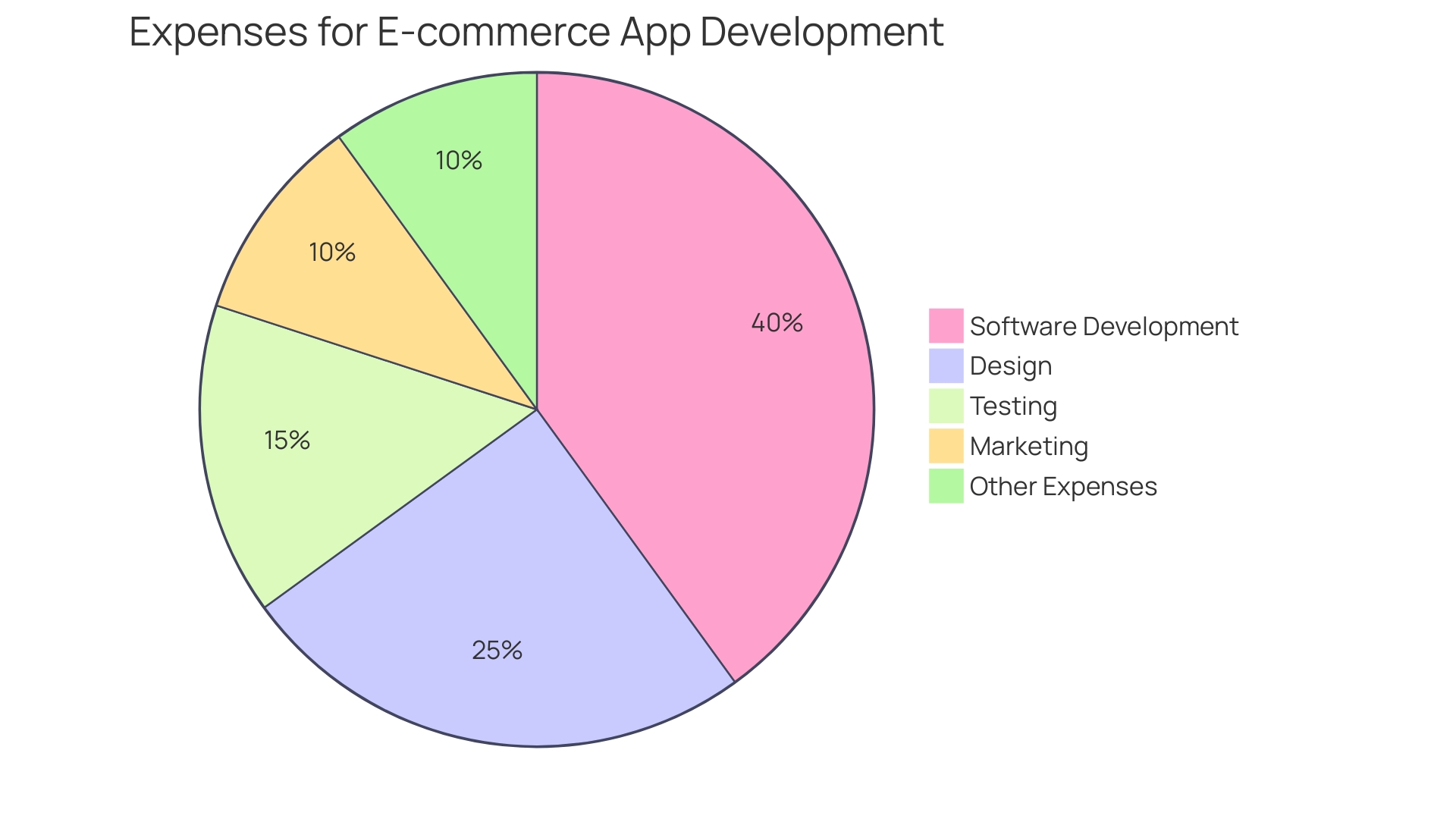
Basic E-commerce App Development Cost
Creating an online shopping application can be compared to building a personalized house, with the cost depending on the dimensions, characteristics, and distinct requirements of the undertaking. The foundation of an e-commerce app includes essential features, a basic user interface, and standard functionality, which is analogous to the baseline structure of a house. This fundamental base is vital for businesses that need to start with a limited budget or simpler requirements, serving as an entry point in the app creation journey. It's important to recognize that this is just the starting phase of the app, with subsequent enhancements and advanced features being added as the business grows and customer needs evolve. The cost for this initial development phase typically ranges from $70K to $250K, reflecting the diverse nature of app complexity and the specific objectives it aims to achieve. With the online shopping market expanding rapidly, investing in a well-built app can position businesses to capitalize on the growing trend of mobile commerce, which includes transactions via smartphones and tablets. As online business continues to encompass a variety of industries and reaches customers globally, the significance of having a robust app that can adapt and scale with the business cannot be overstated.
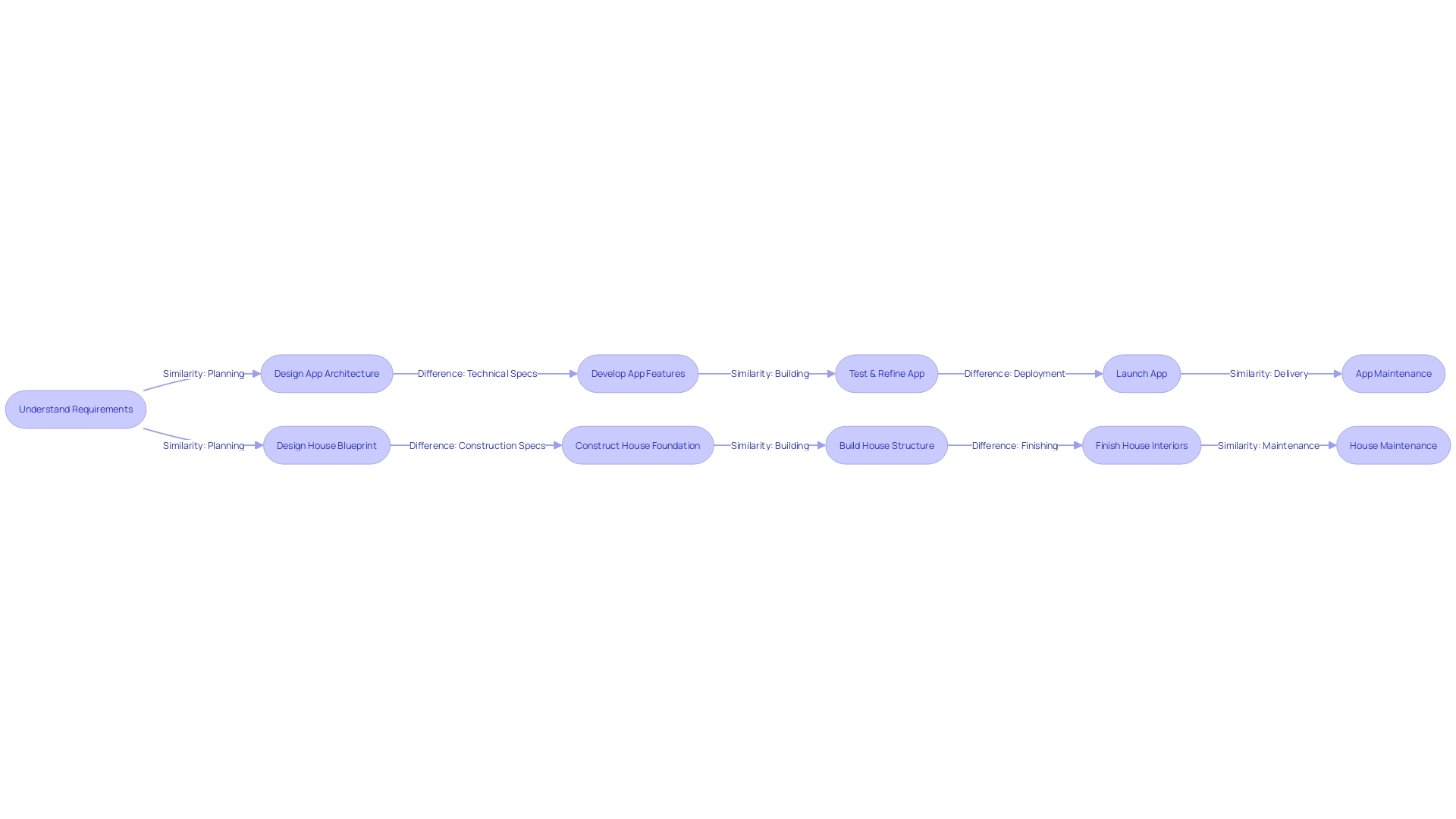
Moderate E-commerce App Development Cost
A mid-range online shopping application investment caters to entities with intermediate financial plans who seek a more personalized digital storefront. This investment level encompasses a suite of enhancements, such as sophisticated design aesthetics and elevated user interface experiences, which are instrumental in distinguishing the app in a competitive marketplace. It goes beyond basic functionality to include features that resonate with a brand's unique identity and customer engagement objectives, providing a blend of value and customization that aligns with the operational scale and clientele outreach goals of growing businesses.
Complex E-commerce App Development Cost
Creating a cutting-edge online shopping application often comes with a significant cost, particularly when the platform necessitates advanced functionalities and personalized enhancements tailored to specific requirements. These advanced applications are often desired by businesses that have the financial flexibility to invest in a comprehensive, feature-rich platform, such as multi-vendor marketplaces or expansive enterprise-level systems. The cost is reflective of the complexity and intricacy involved in creating a seamless, personalized user experience that aligns with the brand's identity and operational requirements. This could involve unique design elements, advanced user interface/experience (UI/UX) considerations, and integration of the latest technologies like machine learning algorithms for enhanced personalization, which are increasingly setting the standard in the dynamic world of online business. As the online shopping environment develops, with AI-driven personalization becoming a significant trend, the investment in a sophisticated online trading platform is not just about functionality but also about remaining competitive and relevant in an ever-changing market.
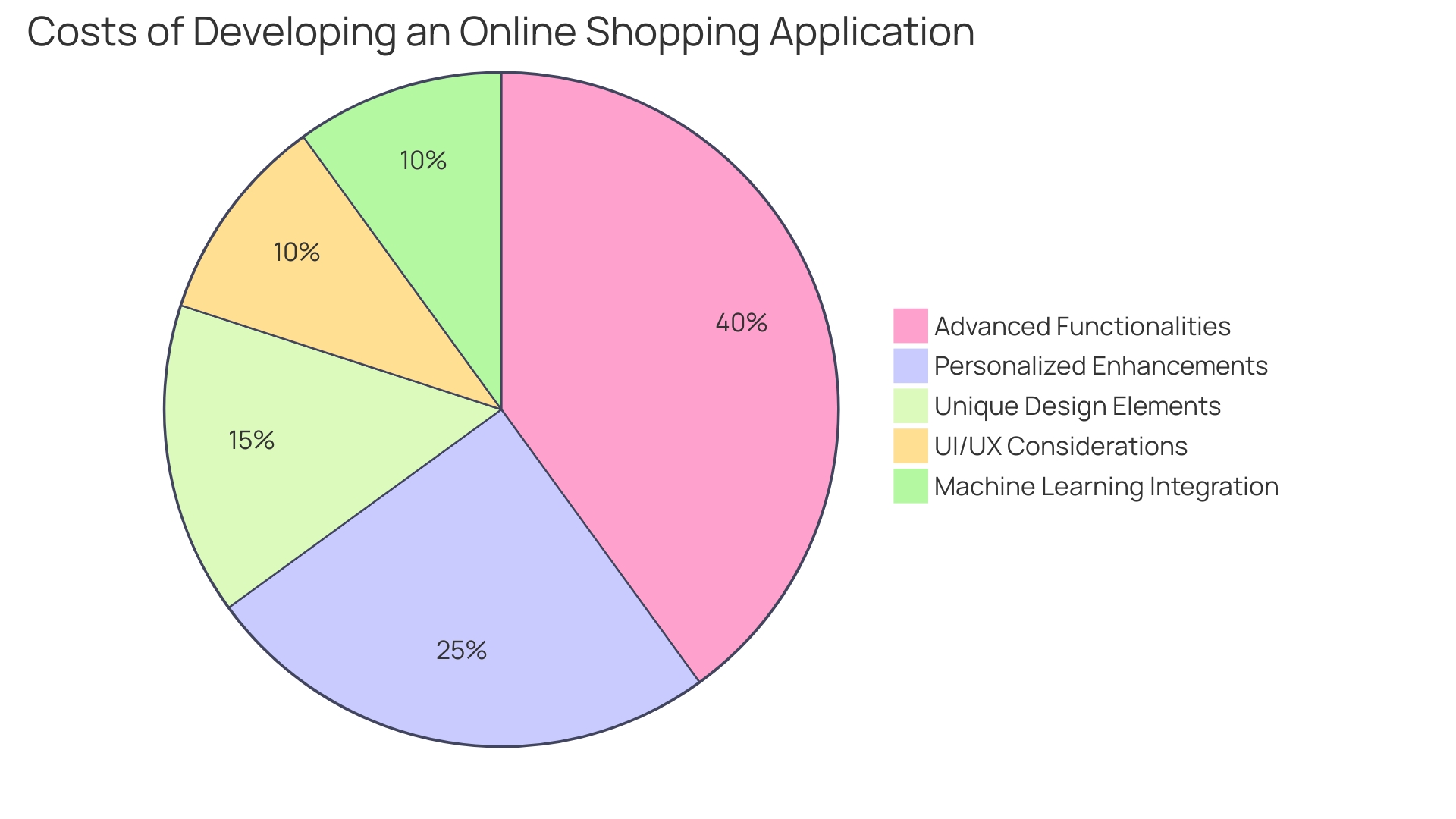
Cost Estimation by Region
The financial commitment required to create an e-commerce application is subject to a myriad of considerations, including the geographical location of the team working on it. On average, prices for software creation are generally accepted to range between $70,000 and $250,000. However, this figure can be influenced by numerous factors, making it essential to undertake a thorough analysis of the project's scope, business aims, and additional external elements to achieve a precise estimate. It is especially important to take into account the type of app being developed, as a simple application with basic functionality will inevitably be less expensive than a more intricate one. By collaborating with an experienced app building organization that comprehends the intricacies of the industry, businesses can establish a practical budget that aligns with their specific requirements and objectives.
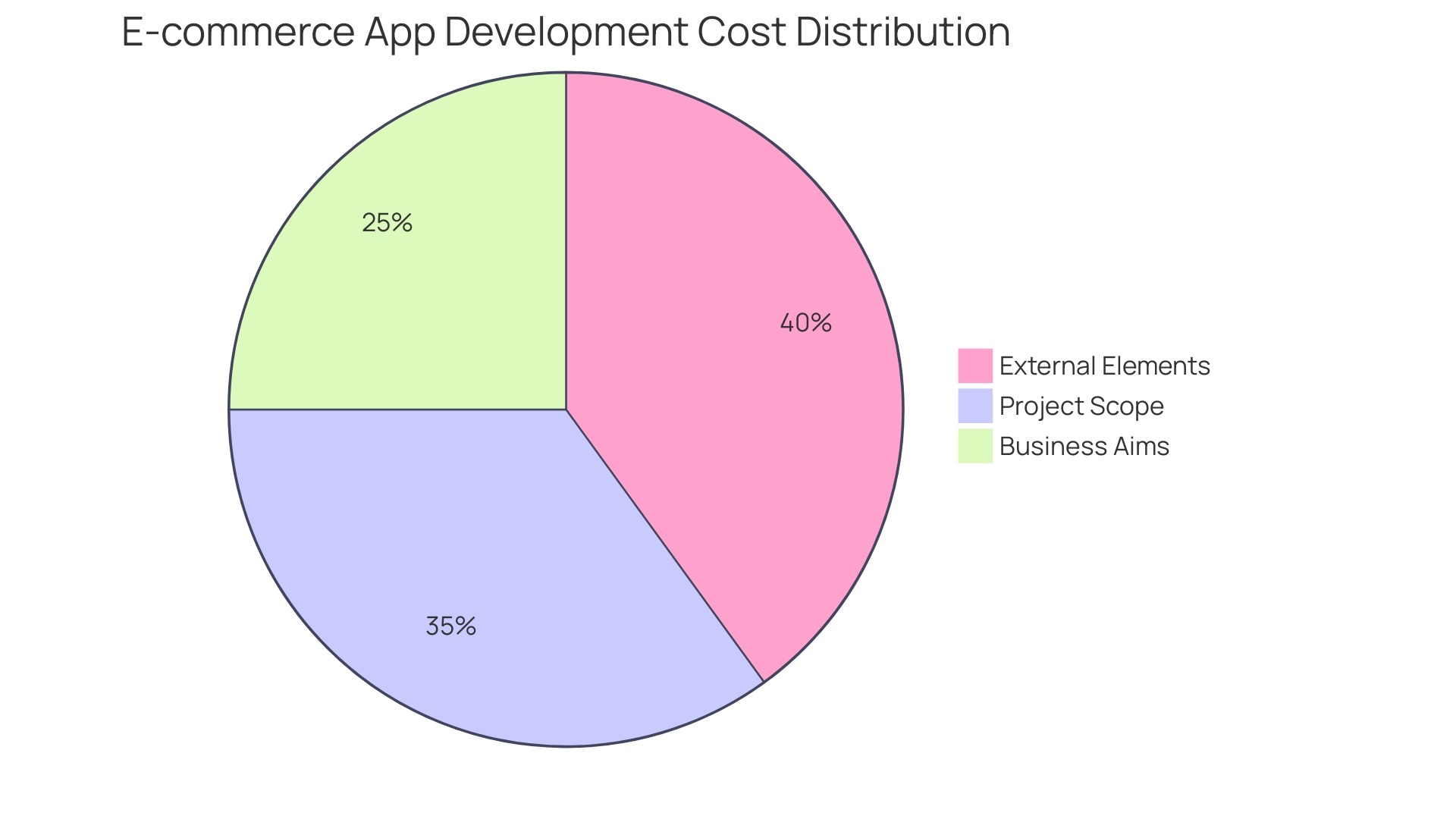
How to Reduce E-commerce App Development Costs
When considering the optimization of expenses for the creation of online shopping applications, it is crucial to examine prosperous examples and the wider trends of the market. Apps like Urban Company demonstrate the service marketplace model's potential, where the app serves as an intermediary, linking service providers with consumers. As these platforms typically earn revenue through commissions or subscriptions, understanding this model is key for anyone venturing into similar online business app development.
While considering the technological aspects, remember that the performance and speed of your app are paramount. As we've learned from industry experiences, setting the right performance goals contributes to an app's success, transcending the specific technologies used.
It's also essential to dissect the construction of a web app layer by layer, much like building a house, where the cost is influenced by size, features, and complexity. From personal websites to complete online transaction platforms, each serves distinct purposes and must be tailored to meet the organization's objectives.
Define your goals clearly before engaging with a development team. Know the technologies you wish to use and the results you expect, to ensure these objectives are communicated effectively.
In terms of investment, building a successful online business presence is more than a financial commitment. It involves time, effort, and a strategic approach to create an online presence that stands out.
Market statistics show that online business is not confined to one format; it extends across 14 diverse markets, including sectors like beverages and food, which are progressively shifting to digital channels. Having this knowledge, developers must customize online business solutions to meet the versatile needs of the market.
The cost of developing software, including online business applications, can vary greatly, from $70K to $250K, influenced by various factors such as project complexity and business objectives. Accurate pricing demands a thorough analysis of the project and a clear understanding of the intended outcomes.
Finally, with the rapid digitization in emerging markets, there's a surge of mobile-first online trading solutions that cater to local conditions. This trend highlights the importance of understanding your target market and designing your e-commerce strategy accordingly to achieve growth and customer loyalty.
Opt for a Simple App Design
Adopting a minimalist app design goes beyond being a visual decision; it's a tactical approach to enhance the user experience and reduce expenses. By focusing on the essential features desired by users and upholding a streamlined and user-friendly interface, you circumvent superfluous intricacies that can escalate expenses. A case study from Chai AI exemplifies this principle, where a redesign of their paywall led to a 20% uplift in purchases, translating into over $1 million in new revenue. This demonstrates how a focused and clear design can directly contribute to a company's financial success. Similarly, UI/UX design plays a vital role in this process, with UI designers crafting the visual elements, while UX designers ensure the product is intuitive and meets user needs. Succinct design is also in line with the 'mobile first' approach, which prioritizes delivering only the most relevant content to users on smaller screens. Furthermore, steering clear of 'tech bloat'—the excessive utilization of technologies—can avert needless complications and maintain costs within the $70K to $250K range generally observed in 2024. Therefore, when planning your app's creation, remember that simplicity in design not only saves money but can also lead to substantial gains in user acquisition and revenue.
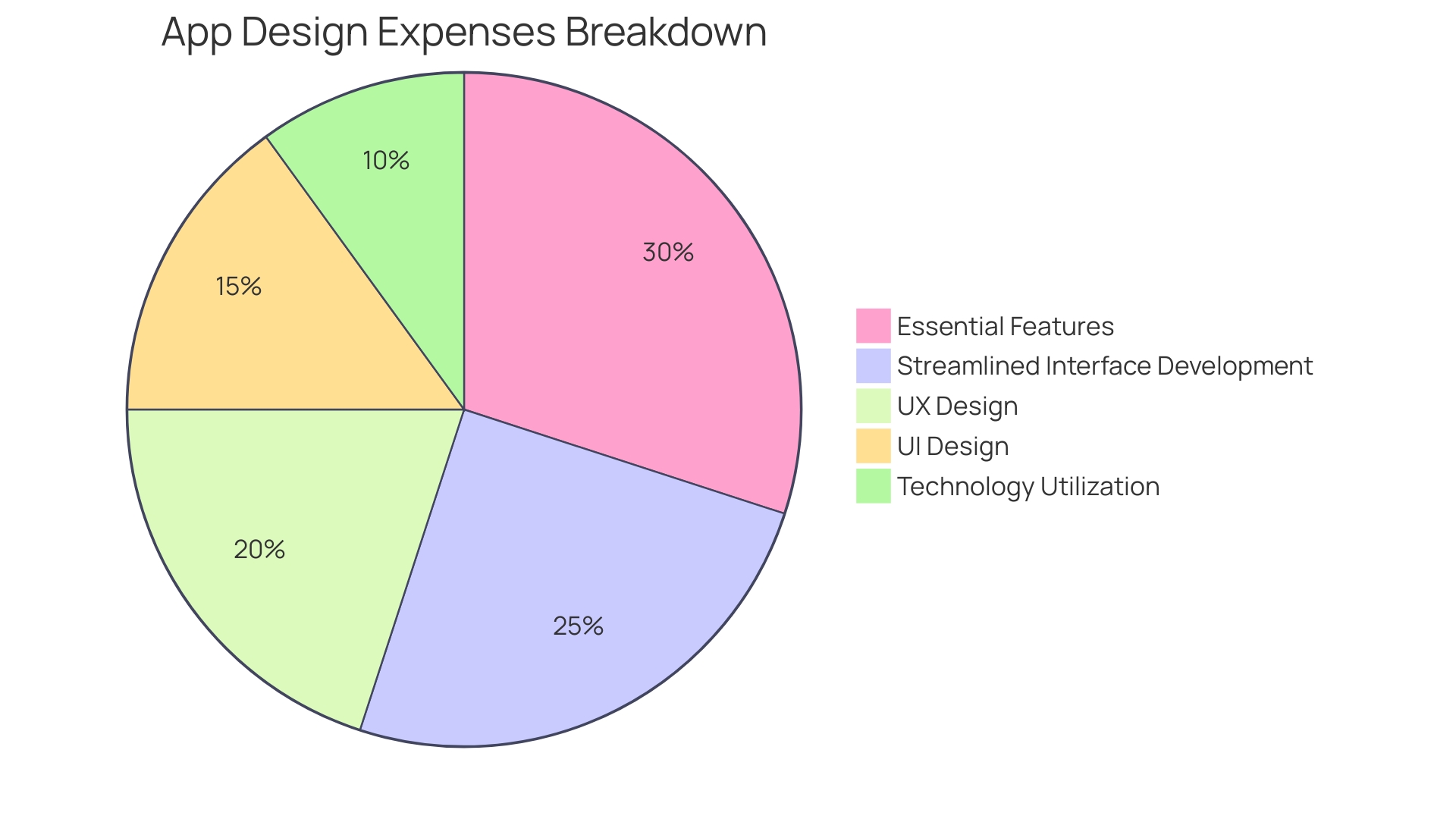
Include Only Essential Features
When entering the world of online business application development, it is important to carefully choose features that are vital to your business objectives and align with your customer's expectations. Begin with constructing a feature matrix—a comprehensive overview that aligns your product’s offerings with the needs of your user base. This matrix will serve as a guide to understanding and tracking the value you deliver to your customers.
Additionally, it's imperative to establish a clear vision for your app by setting definitive objectives and pinpointing key features that dovetail with your app's roadmap. Effective market research is a cornerstone in this process, as it garners insights into user preferences, market trends, and competitive landscapes, all of which are crucial in formulating a robust app launch strategy.
To ensure your app resonates with your audience, immerse yourself in market research to discern your users' behaviors, preferences, and challenges. Analyze competitors to identify market gaps, and engage with your prospective users through surveys and interviews to capture their needs and preferences. This will empower you to craft an app that not only addresses market demands but also stands out in its utility and usability.
The current online business environment is swiftly changing, propelled by technologies like AI that customize the shopping experience. By staying current with these trends and integrating relevant, sought-after functionalities, you create an app that not only meets current standards but is prepared for the future of digital retail.
In the end, even though the initial expenses of creating an online business application can vary greatly, the investment is warranted by the extensive outreach and potential expansion it provides. By focusing on essential, well-researched features and aligning with modern e-commerce trends, you set the stage for a successful and cost-effective digital storefront.

Choose Cross-Platform Development
Selecting a cross-platform app approach can be a strategic move for businesses aiming to tap into the growing number of users who engage with multiple devices. As research indicates, the average consumer is expected to own around six connected devices by 2023, highlighting the need for a seamless user experience across various platforms. Cross-platform app creation allows for the functioning of applications on both iOS and Android using a unified codebase, which not only simplifies the process but can also greatly decrease expenses. In reality, the cost of software creation can vary from $70K to $250K, and choosing a cross-platform approach can aid in keeping costs within the lower range of this spectrum.
Developers frequently struggle with selecting the suitable languages, frameworks, and tools for cross-platform application building. As echoed by industry voices, decisions should be aligned with team capabilities and product goals. With the appropriate tech stack, the advantages of cross-platform programming can be fully achieved, providing a consistent and intuitive connection to the products regardless of the device used.
However, it's essential to weigh the pros and cons of this approach, as the decision must resonate with the specific objectives of your project. Taking into account factors like target audience reach, in-house expertise, monetization plan, and desired level of user engagement will help you decide if cross-platform creation aligns with your objectives. Keep in mind that although the prospect of decreased time and expenses in creating is attractive, every project requires a customized examination to guarantee that the selected path for creating leads to triumph in a fiercely competitive digital environment.
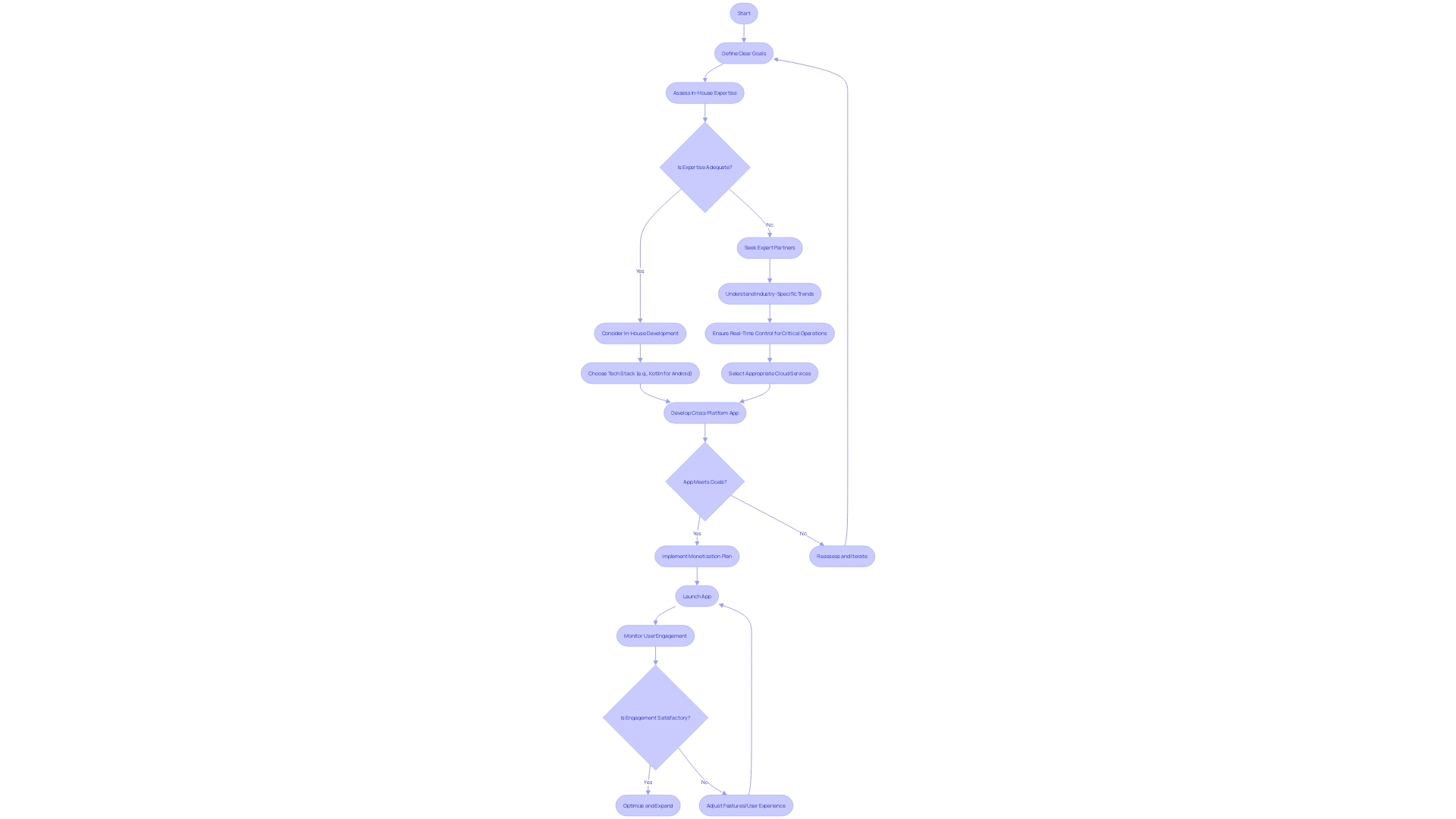
Outsource Development to Regions with Lower Labor Costs
Utilizing global talents for app development can result in significant cost savings without compromising quality. Eastern Europe, Southeast Asia, and South America have become popular hubs for skilled developers, offering competitive rates that can help maintain your budget. A focus on clear goals and expectations, coupled with effective communication and project management, is essential to bridge any gaps and align your team with the project's objectives.
When considering outsourcing, it's crucial to draw from a broad talent pool. For example, Latin America has become a hub of innovation and technology, with companies like Rappi leading the growth of online business in the region and promoting the establishment of numerous startups. This entrepreneurial surge is not only enriching the local tech landscape but also generating a plethora of job opportunities, demonstrating the region's capacity to deliver competent and innovative e-commerce solutions.
Moreover, stories of companies like Lindy, which faced the challenge of integrating a complex network of services for their AI assistant, highlight the significance of having a dedicated team that can navigate through intricate projects, thereby reducing time-to-market and ensuring a competitive edge.
It's worth noting that while price is a significant factor, it should not be the sole determinant. The overall expense of software development includes not only the initial investment but also the continuous maintenance, quality, and alignment with business goals. Therefore, it's advisable to work with agencies that provide thorough documentation, automated testing, and a plan for knowledge transfer, to ensure a long-term return on investment.
Remember, the goal is not just to cut costs but to foster a partnership that drives innovation, quality, and growth for your e-commerce venture.
Conclusion
In conclusion, optimizing the cost of e-commerce app development requires understanding the factors that influence the budget. These include the complexity of app features, the location of the development team, design and user experience, integration requirements, and maintenance.
To optimize costs, prioritize essential features that align with your business goals and user expectations. Consider outsourcing development to regions with lower labor costs, ensuring quality and communication standards are maintained. Focus on a simple app design and a clean user interface to save costs and enhance the user experience.
Carefully select and test third-party systems or APIs to minimize development efforts and costs. Regular maintenance and updates are crucial for the longevity and relevance of your app.
By implementing these cost-saving strategies, you can create a cost-effective e-commerce app that meets your business objectives. Remember to prioritize essential features, consider design and user experience, select the right development team, and plan for maintenance and updates.
In summary, understanding the factors that impact e-commerce app development costs and implementing these strategies will help optimize your investment. By doing so, you can create a successful and cost-effective e-commerce app that meets the needs of your business and users.





